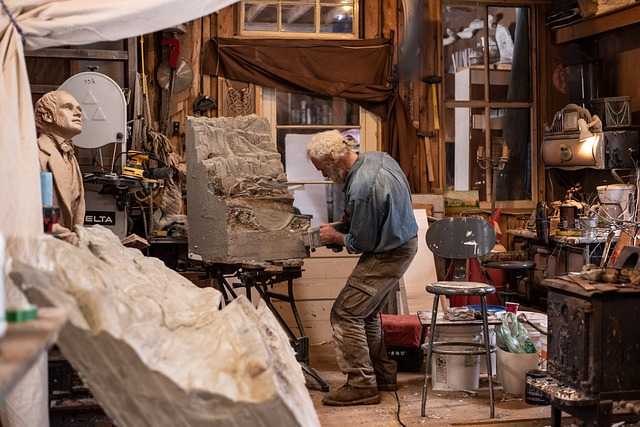Table of Contents
- Exploring the Evolution of Landscape Art through History
- The Techniques and Styles That Define Exceptional Landscape Paintings
- How to Choose the Perfect Landscape Art for Your Space
- Tips for Aspiring Artists to Master Landscape Painting
- Q&A
- Closing Remarks
Exploring the Evolution of Landscape Art through History
From the serene vistas of ancient China to the dynamic strokes of contemporary painters, landscape art has been a mirror reflecting the relationship between nature and mankind. The journey through history reveals a rich tapestry of styles and philosophies, each era bringing unique interpretations to canvas. In ancient times, artists like those in the Song Dynasty revered nature as a source of spiritual enlightenment, often showcasing towering mountains and winding rivers. Their ink wash paintings emphasized harmony and balance, portraying not just the physical beauty of nature but its profound essence.
The Renaissance period marked a significant evolution, with artists such as Leonardo da Vinci infusing scientific precision into their depictions. This era saw landscapes as backdrops to religious and mythological narratives, with attention to perspective and realism. Key attributes during this period included:
- Use of linear perspective to create depth.
- Naturalistic detail and atmospheric effects.
- Integration of human figures in pastoral settings.
As the world embraced Romanticism in the 18th and 19th centuries, a newfound passion for the sublime and dramatic took hold. Artists like Caspar David Friedrich and J.M.W. Turner powerfully captured the furious seas and misty mountains, conveying intense emotion and the sublime power of nature. This era celebrated the transformative and sometimes terrifying forces of the natural world, encouraging a deeper reflection on humanity’s place within it.
In modern times, landscape art is diverse, embracing both traditional techniques and digital innovation. Contemporary artists explore abstract interpretations, environmental themes, and urban landscapes, reflecting socio-political narratives. Here’s a look at different mediums utilized:
| Medium | Features |
|---|---|
| Oil Painting | Rich textures and vibrant colors |
| Digital Art | Innovative tools and virtual landscapes |
| Mixed Media | Combines various materials for diverse textures |


The Techniques and Styles That Define Exceptional Landscape Paintings
Landscape art is a celebration of nature’s vast beauty, capturing the essence and emotion of the environment through a variety of painting methods. Artists employ distinct techniques to create depth and evoke moods that transport the viewer directly into the scene. One hallmark style is atmospheric perspective, where artists skillfully use color and clarity to denote distance. Closer elements appear vibrant and detailed, while distant objects are shaded with subdued tones and hazy outlines, providing an illusion of depth without compromising realism.
Another popular method is palette knife painting, which brings a tactile dimension to landscapes. This technique involves applying layers of thick paint using a knife, creating bold textures and striking highlights. It enhances the viewer’s sensory experience, making the artwork seemingly palpable. Artists like Vincent van Gogh have utilized this method to great effect, allowing for both an emotive and expressive portrayal of the natural world. This approach also lends landscapes an immediate vitality, capturing the transient play of light and shadow across the scenery.
For those who favor a more nuanced approach, glazing techniques offer another dimension of sophistication. By applying thin layers of translucent paint over a dry layer, painters achieve a luminous effect that can mimic the interplay of sunlight and shadow. Different colors are layered to create a richness and depth that cannot be achieved in a single stroke. This method involves strategic patience, as each layer must dry completely before applying the next, but the result is an ethereal glow that brings added life to elements such as water or skies.
| Technique | Characteristics |
|---|---|
| Atmospheric Perspective | Uses color and clarity to denote distance |
| Palette Knife Painting | Applies thick paint for bold textures and highlights |
| Glazing | Creates depth with translucent layers |
In the realm of stylistic influences, impressionism stands out as a transformative movement in landscape painting. It breaks free from the constraints of solid forms and line precision, instead embracing deliberate brushstrokes and a vibrant palette to depict the fleeting impressions of nature. This style captures atmospheric nuances like wind, light, and time, offering an abstract yet relatable vision of landscapes. Artists take the liberty to blur the details, inviting viewers to interpret the elusive qualities of the natural environment through their own imagination.


How to Choose the Perfect Landscape Art for Your Space
When selecting artwork to enhance your living or office space, it’s essential to reflect on the emotional tone you wish to convey. Consider the color palette and scenic elements of the painting: do you want to evoke a sense of calm and tranquility, or perhaps introduce a dynamic energy? Soft pastels and serene views like rolling hills or gentle oceans can bring about feelings of peace, while vibrant scenes featuring bustling cityscapes or dramatic sunsets can inject vigor. Aligning the artwork with the existing mood of your space is key to creating harmony.
- Assess Your Space: Begin by analyzing the wall space available. Large artworks can serve as focal points, but smaller pieces can be grouped to create a gallery effect. Remember, size comes with impact.
- Consider Color Schemes: Artwork should complement your interior decor. While contrast can be striking, harmony often ensures a seamless integration.
- Theme Consistency: The paintings you choose should align with the overall theme of your home. Rustic, contemporary, or minimalist, let your theme guide your choices.
Functionality and practicality play a crucial role when choosing art for different environments. For instance, think about the light conditions in your selected area. Natural light can change the hue and depth perception of colors, while artificial lighting might require different considerations. Additionally, consider the humidity and temperature fluctuations if you’re selecting pieces for kitchens or bathrooms, as these conditions might affect the longevity and quality of the painting over time.
| Location | Ideal Artwork Characteristics |
|---|---|
| Living Room | Bold, Enticing, Conversation Starter |
| Bedroom | Soft, Calming, Relaxing |
| Office | Inspirational, Motivating, Focused |
choose pieces that resonate personally. Art is not just about aesthetics; it’s about connection. Whether it’s a painting that evokes childhood memories or a piece created by an artist you admire, it should align with your personal taste and hold meaning. This ensures not only a visually pleasing environment but also a space that truly feels like yours.


Tips for Aspiring Artists to Master Landscape Painting
When beginning your journey into the world of painting serene vistas and majestic mountains, it is essential to immerse yourself in nature. Spend time outdoors to observe the interplay of light and color. Notice how the variegated hues of leaves change from morning to dusk, or how a lake mirrors the sky with uncanny precision. Create a habit of sketching quick thumbnails to capture the essence of a scene—these snippets will serve as valuable references when you transform them into elaborate paintings.
Materials play a crucial role in achieving the desired effects in artwork. Consider investing in versatile brushes, such as flat and fan brushes, which allow for creating expanses of sky and intricate tree leaves effortlessly. Choose a range of oils, acrylics, or watercolors to match your preferred style, and experiment with different canvas textures until you find what best suits your approach. Don’t shy away from unconventional tools like palette knives, which can add dynamic textures to rocks and water.
Mastering composition is vital to guide the viewer’s eye through your painting. Utilize techniques such as the rule of thirds and leading lines to create harmony within the landscape. Identify focal points—such as a solitary tree or a distant mountain peak—and adjust the surrounding elements to naturally draw attention there. Balance is key; ensure that the painting feels unified without disparate parts, and experiment with color contrasts to create depth and interest.
- Practice patience and persistence to refine skills progressively
- Engage with an art community for constructive feedback and inspiration
- Study works of master landscape artists to understand their techniques
- Utilize digital tools for preliminary sketches and color schemes
Feedback and self-assessment are invaluable companions in your artistic journey. Regularly evaluate your paintings to identify strengths and areas for improvement. You might want to keep a journal to document your challenges and achievements—this reflection can provide motivation and insight into how your style evolves over time.







